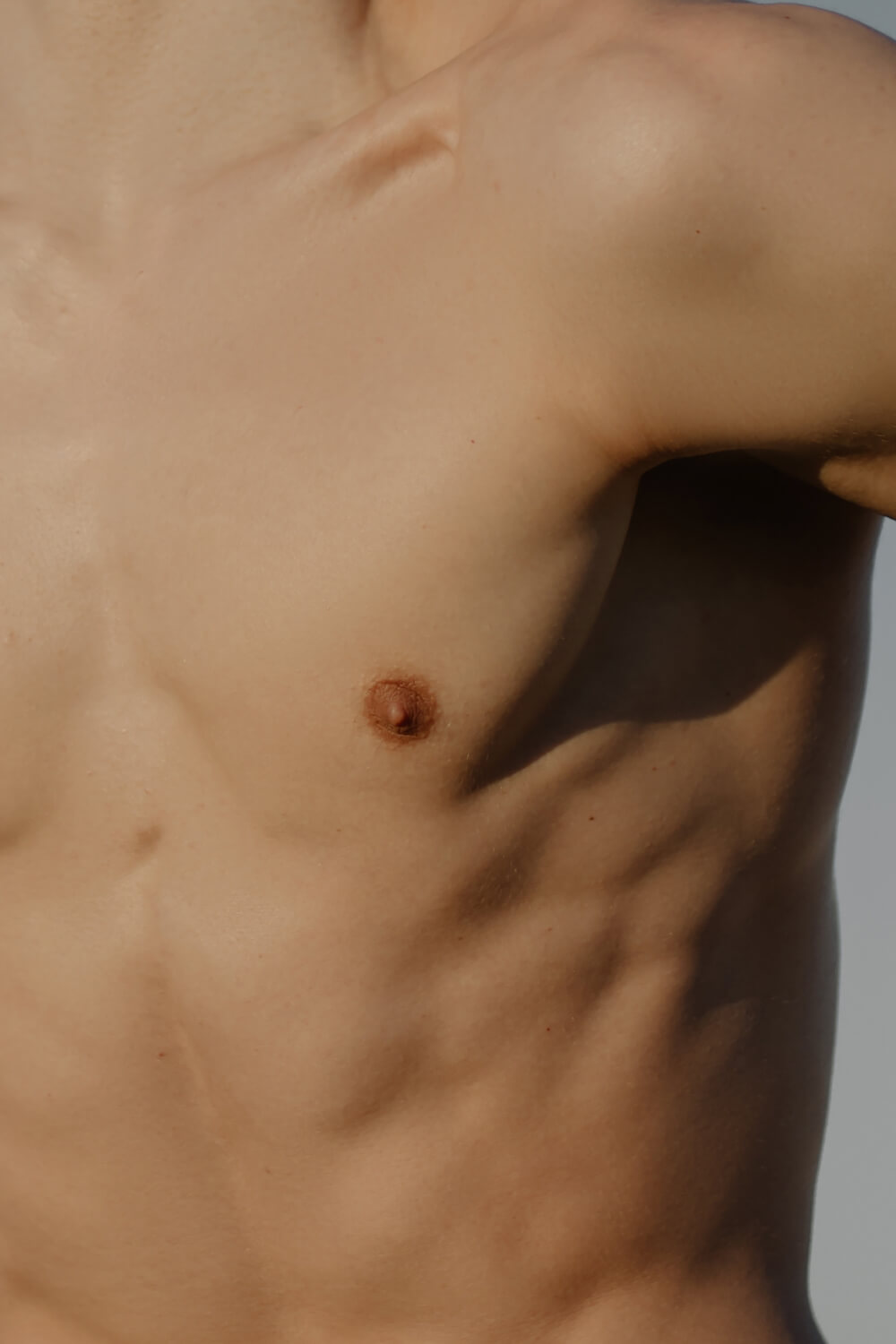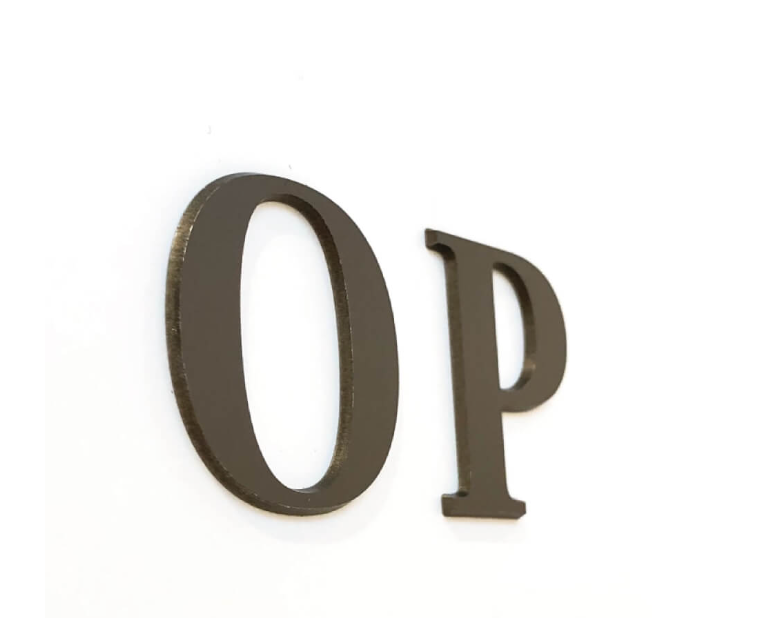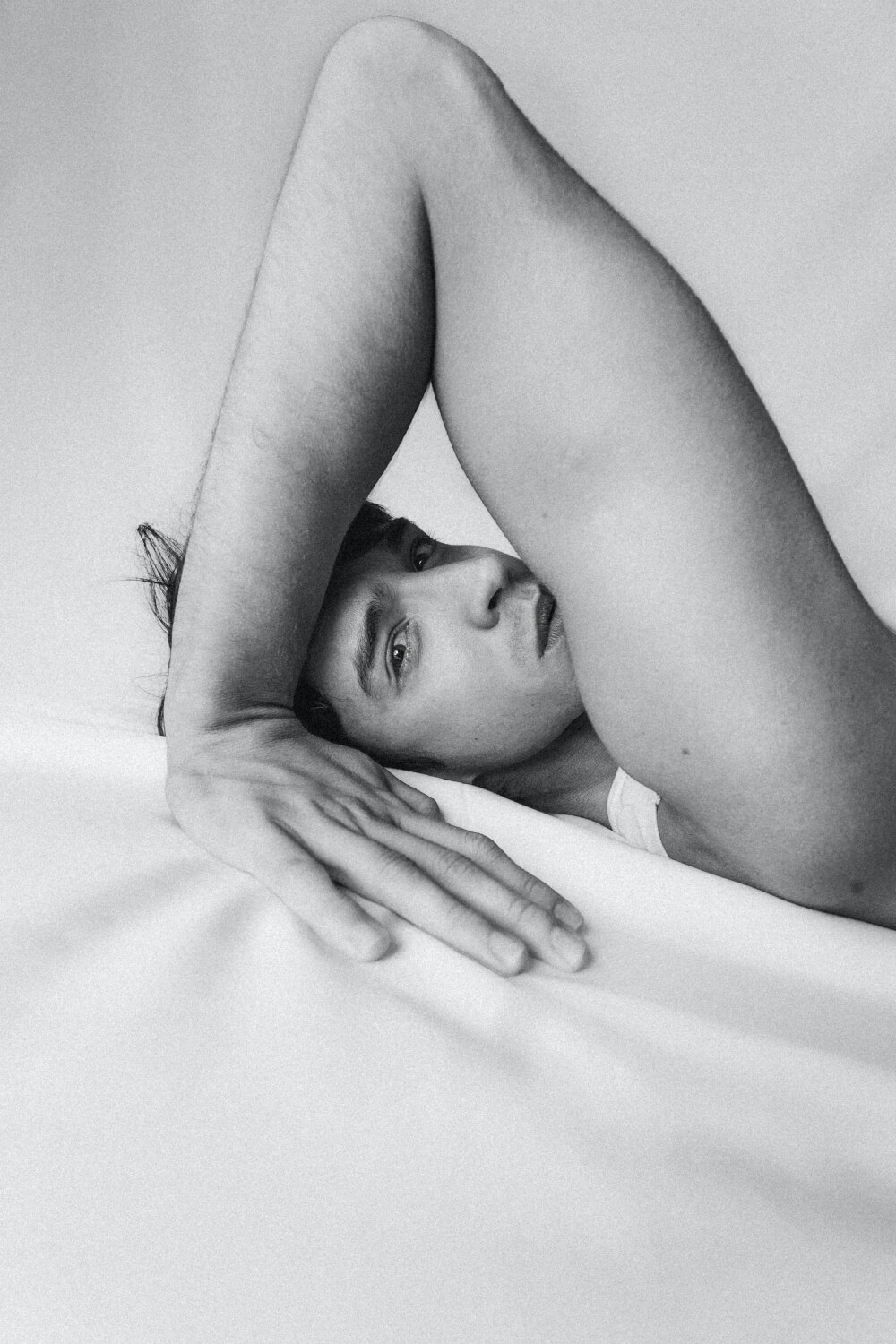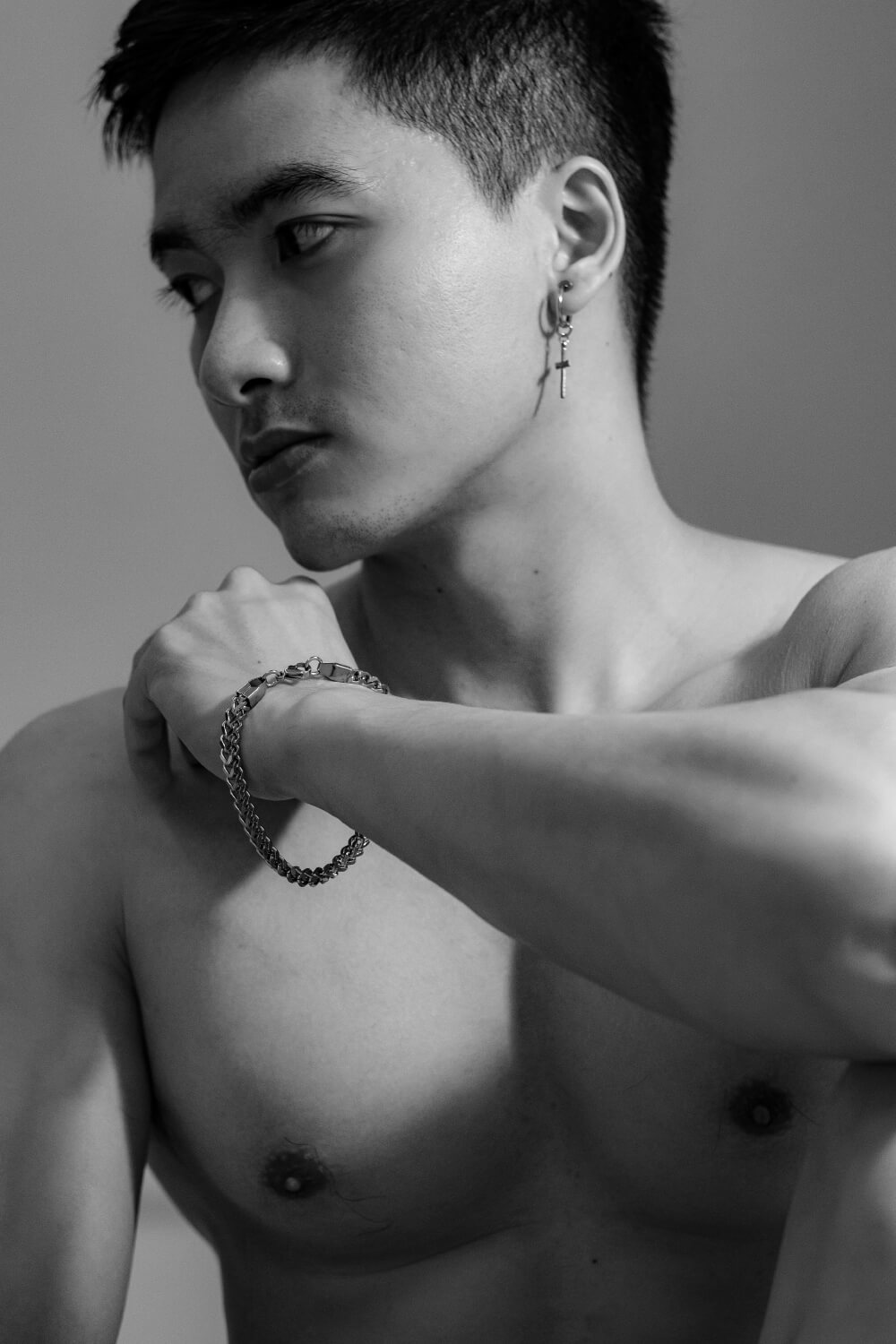Gynecomastia - the unpopular boobs

In brief
What motivates people to undergo treatment for gynecomastia?
For many men, the female appearance caused by developed gynecomastia is an enormous burden. It is not uncommon for those affected to experience significant stigmatization as early as adolescence. In extreme cases, the “male breast” is visible despite clothing and can lead to introverted behavior both privately and professionally.
It is often reported that even in long-term relationships this can be a burden.
What is gynecomastia?
Duration
from 60 min
Pain
less
Scars
yes, inconspicuous
Stay
no
Bandage
yes
Work
after 7 days
Sports
after 3 weeks
Costs
from € 2.000,-
What different methods are there?
How does the operation work technically
After appropriate diagnostics and surgical clarification as part of a personal consultation, you will make an appointment for your operation. We usually perform these operations in the operating room of my surgery.
First, we will take our time to mark the area of the breast to be treated and clarify any final uncertainties before the operation.
The classic surgical treatment for gynecomastia is the removal of the mammary gland tissue. This tissue is located under the nipple so that it can be removed through a small incision at the lower edge of the areola. Drainage tubes are then inserted at regular intervals, which remain in place for approx. 1 day and drain the remaining fluid from the wound area. Depending on the extent of the glandular tissue removed, visible dents or indentations may be visible through the skin. It is therefore advisable to combine gland removal with liposuction of the surrounding area. This liposuction makes it possible to harmonize the shape of the entire breast area. We only use the water-jet assisted method: WAL. According to current studies, this is the gentlest method of liposuction. Suction cannulas are inserted via approx. 3 mm puncture points and gently moved back and forth.
We regularly combine this liposuction with an autologous fat graft in the upper part of the breast to create a “fitness look”. This emphasizes the underlying chest muscles and makes them appear stronger. If there is a lot of excess skin, we also recommend a Bodytite treatment to further emphasize this effect. Depending on the extent of the findings, the operation takes between one and a half and two hours.
Surgical and conservative alternatives
There are various conservative and surgical alternatives for many operations. It is therefore necessary to consider these carefully before any surgical intervention. If the use of a scalpel can be dispensed with due to conservative alternatives, these are of course preferable.
In the case of gynecomastia, however, no promising conservative treatment methods have proven successful.
What type of anesthesia is required?
Can the procedure be combined with other procedures?

Specific features of gynecomastia
The classification of gynecomastia according to Tanner and Hall has become internationally accepted.
The Tanner classification describes the classification of physical development during puberty.
Five stages are distinguished here:
- No palpable glandular body
- Areola enlarged, gland bulging
- Glandular body larger than areola
- Solid glandular body
- Corresponds to female breast
The Hall classification (from 1959) describes the severity of gynecomastia.
Three degrees of severity are distinguished:
- Grade I: Clinically only palpable enlargement of the glandular body
- Grade II: Enlargement already detectable by inspection
- Grade III: Corresponds to female breasts


Whether this operation is performed on an outpatient or inpatient basis?
Risks and complications
Minor complications

Rare, major complications
What to do in the event of complications?
Healing and progress
How long does it take to heal?
Is the treatment painful
The operation itself is painless due to the sedation. Immediately after the procedure, the painkillers continue to have a slight effect, so that moderate pain may be felt in the suctioned areas after a few hours.
Swelling can also cause a feeling of tightness for the first 2-3 days. We counteract this as best as possible by putting your compression garment on immediately after the operation. Unfortunately, a slightly immobilizing feeling cannot always be avoided. The inserted drains may cause a slight pulling sensation within the first 24 hours, which disappears when the drains are removed.



“Wieder ein ausgezeichnetes Ergebnis der Botox-Behandlung! “
“I love Morpheus 8. My favorite!“
“Ich habe erheblich mehr Schmerzen nach dem Eingriff erwartet und war positiv überrascht wie gut es mir noch am selben Tag und jetzt an Tag 2 geht. Der Tag der...
“Ich war heute zum wiederholten Mal für eine Botox-Behandlung bei Dr.Lutfi und werde mich auch in Zukunft nur von ihm behandeln lassen. Sollte ich jemals andere...
“Kompetente und ausführliche Beratung und super Behandlung (Botox gegen Lachfalten). Bin mit dem Ergebnis sehr zufrieden und komme gerne wieder! “
When can the final result be expected?
It takes an average of 3-6 months for the swelling to disappear completely. The scars may be slightly reddened temporarily.
It is recommended that you perform independent massages. We will instruct you accordingly.
What patients should plan to do?
A surgical procedure requires a certain amount of planning and organization not only for the surgical team, but also for the patient, both before and after the operation. It is important that you are well prepared and know what to expect. This allows you to concentrate fully on enjoying the results.
One of the most important questions before any surgical procedure is the “why”. You should be clear about why you want to have surgery at all. Once you have answered this question and made a decision, the following questions should definitely be clarified: How? By whom? When?
I will be delighted if you find your way to my surgery and would like to be operated on by me. However, I also recommend all my patients to get a second opinion. You should be absolutely sure about the date and surgeon.
Plan the time before your operation
We recommend comprehensive diagnostics before every breast operation. This includes an endocrinological examination as well as an ultrasound scan. Surgical removal only makes sense if there is a confirmed suspicion of gynecomastia. If it is merely an accumulation of fatty tissue, liposuction alone is sufficient.
Once you have decided to have the operation after a detailed consultation and anamnesis, you should plan the time after the operation accordingly with those around you. Although you should not expect to be out of action for any length of time, you may occasionally experience temporary restrictions in movement.
Plan the time after your operation
Patients are socially acceptable 2-3 days after the operation. However, we recommend that you take it easy physically for approx. 14 days until the wound has healed. We also recommend wearing compression garments for 4-6 weeks to counteract swelling.
The stitches can be removed after 10-12 days. Light sporting activities are then possible again. If skin tightening has also taken place as part of the operation, we recommend wearing special silicone ointments or plasters and strictly avoiding direct sunlight for optimal wound healing.
Patients generally describe the pain after the operation as moderate muscle soreness.

How much does surgery cost?

Financing, down payment, installment payment
FAQ - Gynecomastia
Plastic surgery
- Home
- About Me
- Aesthetic surgery
- Aesthetic treatments
- Before After Archive
- Ordination
- For doctors
- Contact
- Cost

